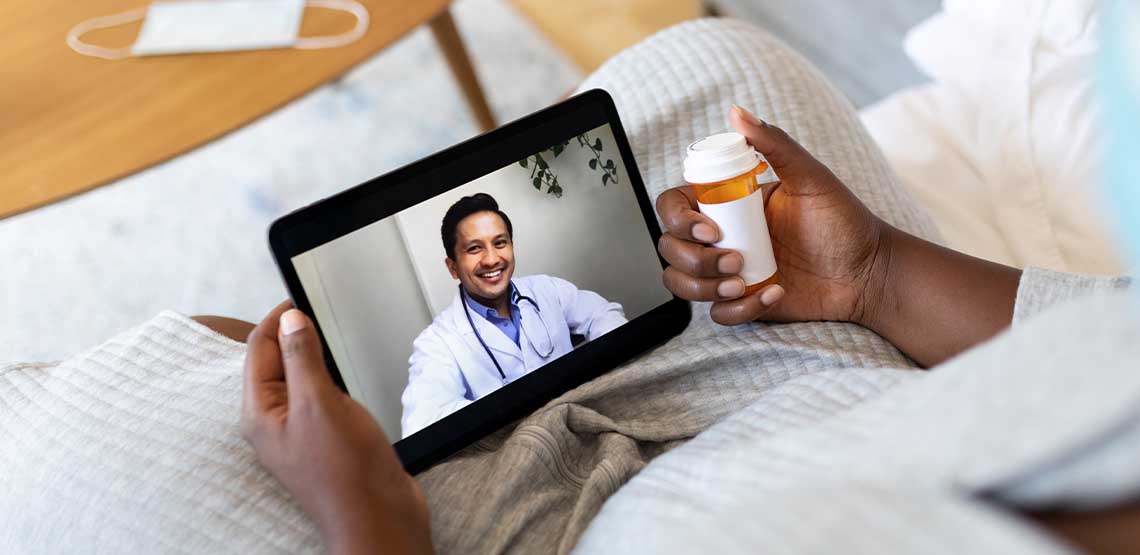9 Tips to Make a Virtual Doctor Appointment Go Smoothly
A virtual doctor appointment is not entirely new. Previously, they have been used for better access to healthcare for a variety of individuals. Yet, with COVID-19 and a worldwide effort to reduce the spread, a large portion of healthcare, including doctor appointments, has been switched over to virtual care. This means that if you do not necessarily need to go into your doctor’s office or clinic, you do not have to. In fact, right now, your doctor would prefer to talk with you via a video call or phone call.
However, maybe you have not had a virtual doctor appointment yet and if you have one coming up you may be unsure as to what to expect. In this article, we go over everything you need to know when it comes to a virtual doctor appointment.
What is a Virtual Doctor Appointment?
A virtual doctor appointment refers to a virtual visit that takes place between you (the patient) and your doctor. This may occur over a secure video connection or on the phone. This also leaves you with the convenience of not having to waste time commuting to your doctor’s appointment, as well as not having to risk exposure to COVID-19.
Fortunately, technology has gotten to the point that virtual appointments are possible for most individuals. It’s easy to use and it is convenient for problems that do not require a full physical assessment.
The major downside is that for some instances it is better to see your doctor in-person. We’ll dive into this in more detail in a later section of this article. It’s also important to note that virtual appointments are, at the very least, lessening the number of individuals (particularly ill individuals) who are entering the doctor’s office, which is necessary right now to reduce the spread of COVID-19.
What You Can Expect
So, what should you expect with a virtual appointment? How does it go exactly? If your appointment is a phone call, make sure you are available for the time your appointment starts. This means turning on the ringer and making sure you answer your phone. When it comes to virtual appointments, it is rare to have to wait too far past your scheduled appointment time. Usually, your doctor will call at the time it starts. Occasionally, they may be running a few minutes behind. But again, it beats the wait that many are used to at their doctor’s office.
If your appointment is through video call, your doctor will likely email you a secure link prior to your appointment. This link will take you to a video call portal, where you can chat with your doctor face-to-face.
Typically, these appointments last about 15 to 30 minutes, depending on your reasoning for the appointment. Your doctor will send any necessary prescriptions to your pharmacy after your call, which you can then go pick up yourself or have delivered.
Related Search Topics (Ads)
The Pros and Cons of a Virtual Appointment
What’s the good news and what is the bad news when it comes to virtual doctor appointments? Check out the pros and cons below.
The advantages of a virtual appointment include:
- No commute
- Less time wasted on a commute
- You can have your appointment within the comfort of your own home
- It reduces your risk (and your family’s risk) of exposure to COVID-19
- It provides individuals with mobility issues an easy way to access healthcare
The disadvantages of a virtual appointment include:
- It could be considered less personable
- Security may be a concern for some individuals
- Being able to perform a physical examination is very limited
- It’s not suitable for certain conditions that require immediate medical attention or a thorough physical exam
9 Tips for Your Next Virtual Appointment
How can you ensure that your virtual appointment goes as smoothly as possible? Here are a few tips:
- Set a reminder for your appointment time and connect via the right virtual means to access your appointment so you do not miss it. (This may mean turning your phone on loud or going to the link sent in an email.)
- Write down any questions or concerns you have so you are ready and prepared.
- Submit any forms required before your appointment.
- Ask your doctor’s office to email you any questionnaires or ask them to inform you how to send pictures, if required.
- Make sure the device you intend on using is fully charged.
- Download any software or apps you need ahead of time for your appointment.
- Use headphones for security and for ease of use.
- If your call is online and not through the phone, test your internet speed beforehand. You will need to have a high-speed and stable internet connection for your appointment.
- Set up a spot in your home for your appointment, such as at your kitchen table, in your office, or in your living room, and make sure your screen works properly.
In Summary
A virtual doctor appointment does not have to be daunting! Test and prepare beforehand and it should all run smoothly. Use our tips above to set yourself up for success. You may want to get used to this form of communication with your doctor. With technology becoming more and more integrated into our everyday lives, this may very well become the new norm.

